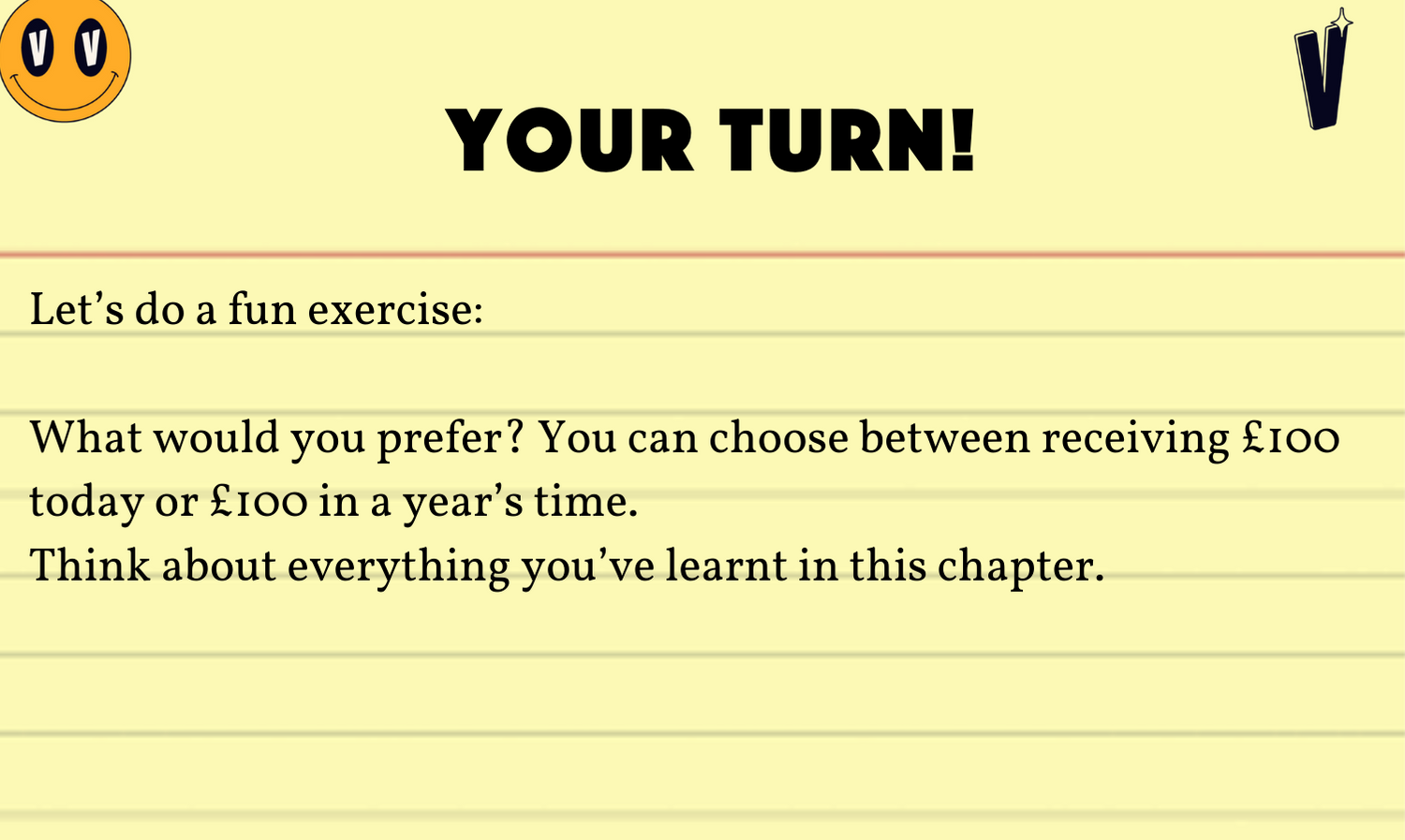Chapter 7 – How Does Investing Work?
These mini-money guides are based on the practical money book "You're Not Broke You're Pre-Rich" by Emilie Bellet.
Once you’ve built up emergency savings and are on your way to saving for those short and medium term goals, you might want to consider investing for the long-term.
Investing in the stock market is the next stage in your financial journey, and the goal is to achieve those long-term plans like retirement by ensuring your money grows in value. But before you jump in, it’s a good idea to be really clear about what investing is, why we do it and what are the risks involved.
The two most important concepts to get our heads around are inflation and compound interest. They help explain why we should invest in the first place, rather than just stick everything in a savings account.
Inflation means that the cost of goods can increase over time (the opposite is true when we have deflation), but if our wages don’t go up at the same time, we’re not as rich as we thought. So, the £100 we earn today does not have the same value as the £100 we earn next year, because in a climate of inflation, we can afford to buy less as prices have gone up. With many banks offering an interest rate lower than inflation, your cash savings still run the risk of reducing in value over time. Investing, on the other hand, aims to beat inflation, so that your cash grows in line with growing prices.
Now we come to compound interest - the magic cornerstone of investing. Compound interest means you earn interest not only on the original money you put into that savings account, but you’re also earning interest on the interest. Double interest, and without any effort on our part! It can add up to a snowball effect in the long run. Even Albert Einstein called compound interest “the eighth wonder of the world”!
With those two goals in mind, beating inflation and growing your cash via compound interest, the sooner you start to invest, the better.
But as I said, there are risks involved. It would be great to know the outcome of a financial decision in advance and have total certainty about the result. But investing doesn’t work like that. Who can predict the future? Things may not go as planned.
But risk is also relative. For example, the level of risk you can afford to take is higher when you are younger and have longer to recover from market dips. The level of risk is also not the same for all asset classes i.e. the things you can invest in - some are higher, like equities (shares of companies), and some are more secure, like UK government bonds (forms of debt).
Generally speaking, the more risk we are willing to take, the higher the returns could be. The trick is to invest in a diversified portfolio - a mix of different assets - which behave differently over time and collectively have a higher chance of not losing your money. In other words, don’t put all your eggs in one basket.
Still unsure? Start off investing very small amounts, and see what it feels like as the markets go up and down. How comfortable do you feel? What risk are you willing to take with more money?
Here’s the bottom line: you can always make excuses for not investing because it seems complex, it’s laden with jargon, and if you are a woman, it’s traditionally viewed as a “man’s thing” to do. It’s time to change your preconceptions and negative concerns and reframe your narrative around it. Think of investing is as a smart, necessary strategy for making your money work for you. Once you see it that way, you’ll feel empowered to take action.
JOIN THE COMMUNITY!
Get our weekly newsletter and check our future events here.
If you want to learn more about the book and see a few photos from the book tour, it’s here. You can order "You're Not Broke, You're Pre-Rich" on Amazon and if you’ve read the book and enjoyed it, I will be forever grateful if you could review it on Amazon or Goodreads.
DISCOVER MORE CONTENT FROM THE BOOK
Chapter 2 – Get Real With Your Money
Chapter 3 – Planning For The Future
Chapter 4 – Own It: Get A Grip On Your Money
Chapter 5 – Asking For More £££
Chapter 6 – Navigating Your Bank Balance
Chapter 7 – How Does Investing Work?
Chapter 8 – Investing in The ‘Stock Market’
Chapter 9 – Want to Buy a House?
Thank you, Emilie


